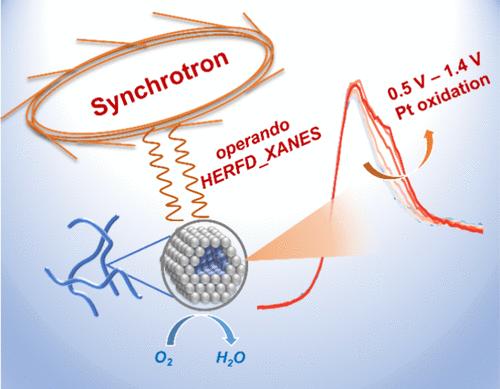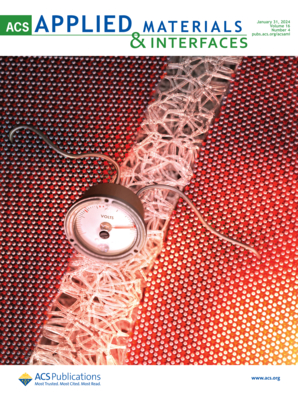A Modified Galvanic Cell Synthesis of Pd@Pt Core–Shell Nanowire Catalysts: Structural Insights and Enhanced ORR Performance
IF 8.3
2区 材料科学
Q1 MATERIALS SCIENCE, MULTIDISCIPLINARY
引用次数: 0
Abstract
One-dimensional nanostructures, specifically Pd@Pt core–shell nanowire catalysts, have garnered significant attention because of their potential to enhance the sluggish kinetics of the oxygen reduction reaction (ORR). However, fully realizing their potential depends on achieving consistent and uniform synthesis. In this study, we introduce an improved galvanic synthesis method for Pd@Pt core–shell nanowire catalysts (Pd-NW@Pt/C) that eliminates the need for electrochemical control or reducing agents, making it more accessible and efficient than the traditional Cu underpotential deposition (Cu-UPD) method. Our approach ensures a uniform Pt shell, resulting in superior ORR activity, with a mass activity of 1.06 A mgPt–1 and a specific activity of 0.80 mA cmPt–2. Detailed operando X-ray absorption spectroscopy (XAS) measurements, including high-energy resolution fluorescence detection (HERFD-XAS), revealed that Pd-NW@Pt/C catalysts with a fully covered Pt shell exhibit shorter Pt–Pt bond lengths and weaker oxygen binding energies compared to partially covered Pt shell nanowire catalysts (Pd-NW@Pt/C-ref) and nanoparticle catalysts (Pd-NP@Pt/C), leading to significantly enhanced ORR activity. This study demonstrates the effectiveness of a modified galvanic cell method for producing high-performance Pd@Pt core–shell nanowire catalysts, offering insights into their structural and electronic properties.

Pd@Pt 核壳纳米线催化剂的改良电镀电池合成:结构见解和增强的 ORR 性能
一维纳米结构,特别是 Pd@Pt 核壳纳米线催化剂,因其具有增强氧还原反应(ORR)缓慢动力学的潜力而备受关注。然而,能否充分发挥其潜力取决于能否实现一致、均匀的合成。在本研究中,我们介绍了一种改进的 Pd@Pt 核壳纳米线催化剂(Pd-NW@Pt/C)的电化学合成方法,该方法无需电化学控制或还原剂,与传统的铜电位沉积(Cu-UPD)方法相比,更加方便、高效。我们的方法确保了均匀的铂壳,从而产生了卓越的 ORR 活性,其质量活性为 1.06 A mgPt-1,比活性为 0.80 mA cmPt-2。包括高能量分辨荧光检测(HERFD-XAS)在内的详细操作性 X 射线吸收光谱(XAS)测量显示,与部分覆盖铂壳的纳米线催化剂(Pd-NW@Pt/C-ref)和纳米粒子催化剂(Pd-NP@Pt/C)相比,完全覆盖铂壳的 Pd-NW@Pt/C 催化剂具有更短的铂铂键长度和更弱的氧结合能,从而显著提高了 ORR 活性。这项研究证明了改良电解池法在生产高性能 Pd@Pt 核壳纳米线催化剂方面的有效性,并对其结构和电子特性提出了见解。
本文章由计算机程序翻译,如有差异,请以英文原文为准。
求助全文
约1分钟内获得全文
求助全文
来源期刊

ACS Applied Materials & Interfaces
工程技术-材料科学:综合
CiteScore
16.00
自引率
6.30%
发文量
4978
审稿时长
1.8 months
期刊介绍:
ACS Applied Materials & Interfaces is a leading interdisciplinary journal that brings together chemists, engineers, physicists, and biologists to explore the development and utilization of newly-discovered materials and interfacial processes for specific applications. Our journal has experienced remarkable growth since its establishment in 2009, both in terms of the number of articles published and the impact of the research showcased. We are proud to foster a truly global community, with the majority of published articles originating from outside the United States, reflecting the rapid growth of applied research worldwide.
 求助内容:
求助内容: 应助结果提醒方式:
应助结果提醒方式:


